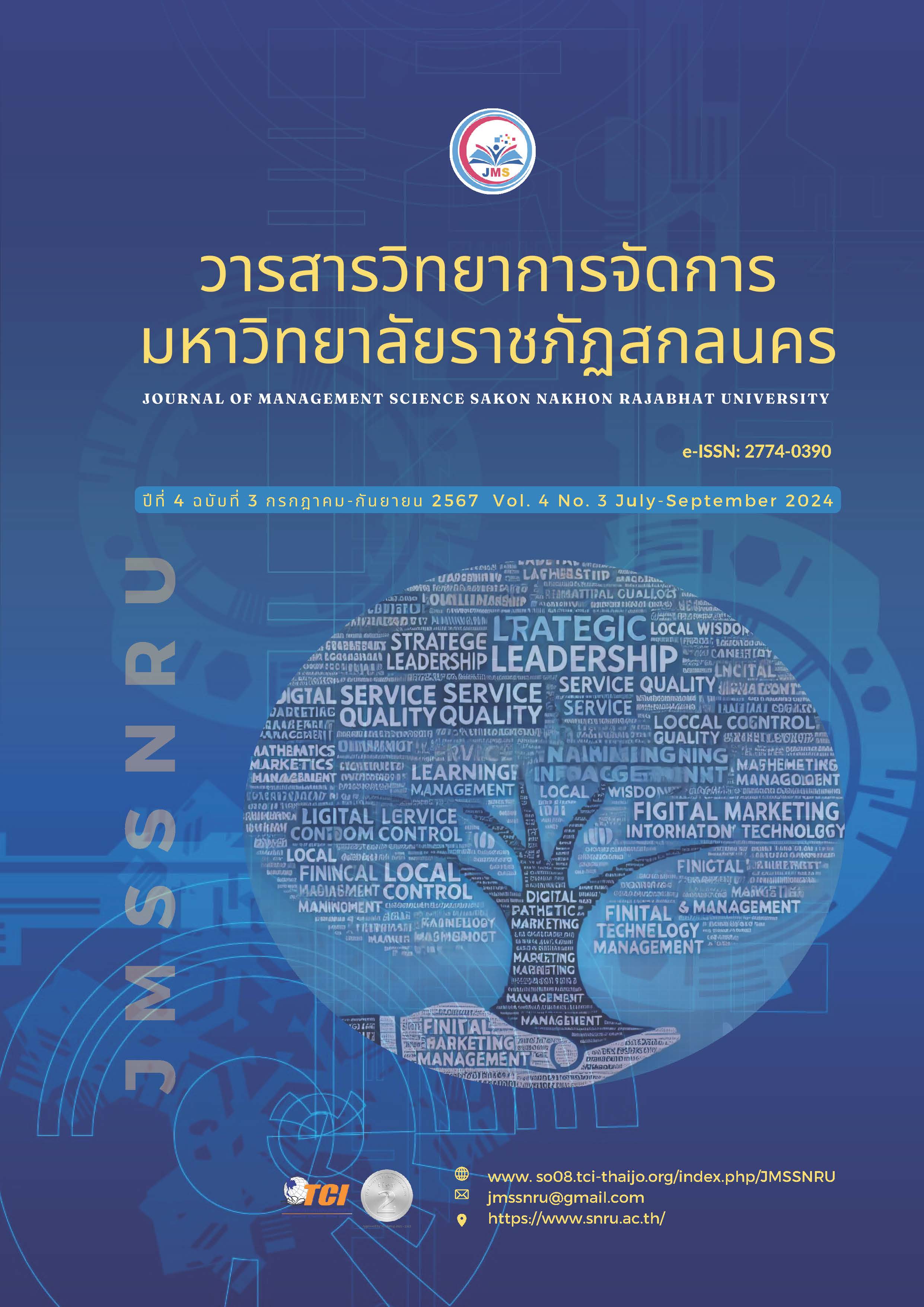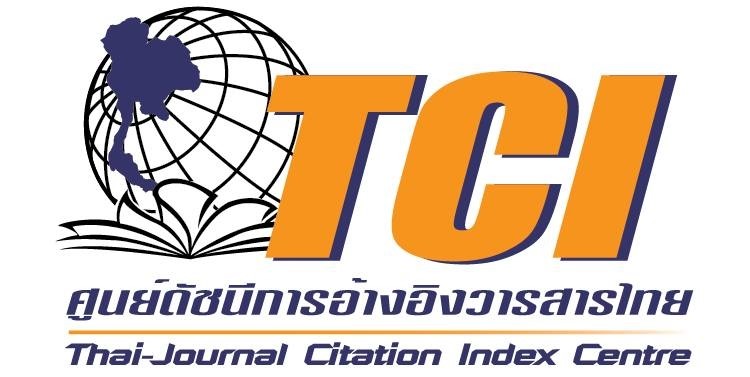การรับรู้ประสบการณ์ตราสินค้า คุณค่าตราสินค้า และการตัดสินใจใช้บริการ สถานบริการออกกำลังกาย
คำสำคัญ:
การรับรู้, ประสบการณ์ตราสินค้า, คุณค่าตราสินค้า, การตัดสินใจใช้บริการ, สถานบริการออกกำลังกายบทคัดย่อ
การศึกษานี้มีวัตถุประสงค์เพื่อศึกษาความสัมพันธ์ระหว่างการรับรู้ประสบการณ์ตราสินค้า คุณค่าตราสินค้า และการตัดสินใจใช้บริการสถานบริการออกกำลังกายของผู้ใช้บริการ เก็บรวบรวมข้อมูลจากกลุ่มตัวอย่างที่เป็นผู้ใช้บริการสถานบริการออกกำลังกายจากการสุ่มตัวอย่างแบบเจาะจง (Purposive Sampling) จำนวน 612 คน ข้อมูลที่ได้นำมาวิเคราะห์ด้วยสถิติเชิงพรรณนา และทดสอบสมมติฐานด้วยสถิติสัมประสิทธิ์สหสัมพันธ์ของเพียร์สัน (Pearson’s Product Moment Correlation Coefficient) ผลการศึกษา พบว่า การรับรู้ประสบการณ์ตราสินค้าสถานบริการออกกำลังกาย การรับรู้คุณค่าตราสินค้า และการตัดสินใจใช้บริการ ในภาพรวมทุกประเด็นอยู่ในระดับมาก และพบว่า การรับรู้ประสบการณ์ตราสินค้ามีความสัมพันธ์กับการรับรู้คุณค่าตราสินค้า และการตัดสินใจใช้บริการสถานบริการออกกำลังกาย
เอกสารอ้างอิง
กรมพลศึกษา. (2566). ผลการสำรวจการออกกำลังกายประจำปี 2566. สืบค้น 18 กุมภาพันธ์ 2567 จาก https://www.smartdpe.dpe.go.th/trend.
ถนัดกิจ จันกิเสน. (2566). ธุรกิจฟิตเนสถูกดิสรัปต์หลังคนออกกำลังกายที่บ้านมากขึ้น AP มองเป็นช่องว่างต่อยอดธุรกิจอสังหาสู่ ‘FitFriend เทรนเนอร์เดลิเวอรี่’ เฉลี่ยครั้งละ 1,000 บาท. สืบค้น 18 กุมภาพันธ์ 2567 จาก https:/www./thestandard.co/ap-fitfriend.
ไทยรัฐ ออนไลน์. (2567). เปิดเทรนด์สุขภาพ และการออกกำลังกายในปี 2567. สืบค้น 18 กุมภาพันธ์ 2567 จาก https://www.thairath.co.th/lifestyle/life/2755894.
ธนาคารกรุงเทพ. (2564). ธุรกิจออกกำลังกายออนไลน์กับโอกาสเติบโตช่วงโควิด. สืบค้น 20 มกราคม 2567 จาก https://www.bangkokbanksme.com/en/online-fitness-business-during-covids.
วชิระ ปากดีสี. (2560). การพัฒนาและส่งเสริมอุตสาหกรรมกีฬาของประเทศไทย. สืบค้น 25 มีนาคม 2564 จาก https://www.slideshare.net/pakdisi/ss-84880996.
สถาบันบัณฑิตพัฒนบริหารศาสตร์. (2560). รายงานสรุปสำหรับผู้บริหาร (Executive Summary Report) โครงการจัดทำแผนพัฒนาเศรษฐกิจการกีฬาของประเทศไทย ฉบับที่ 1 (พ.ศ. 2562 - 2564). สืบค้น 25 มีนาคม 2564 จาก https://secretary.mots.go.th/ewtadmin/ewt/policy/download/article/article_ 20190711164315.pdf.
สภาขับเคลื่อนปฏิรูปประเทศไทย. (2558). การส่งเสริมอุตสาหกรรมกีฬา. คณะกรรมาธิการขับเคลื่อนการปฏิรูปประเทศด้านกีฬา ศิลปะ วัฒนธรรม การศาสนา คุณธรรม และจริยธรรม, สำนักกรรมาธิการ ๓ สำนักงานเลขาธิการสภาผู้แทนราษฎร ปฏิบัติหน้าที่สำนักงานเลขาธิการสภาขับเคลื่อนการปฏิรูปประเทศ. สภาขับเคลื่อนการปฏิรูปประเทศ สืบค้น 16 พฤษภาคม 2564 จาก https://www.parliament.go.th/ewtcommittee/ewt/drive_sport/download/article/article_20170522163351.pdf.
สารัช ดีงาม และชัย นิมากร. (2562). รูปแบบทางการการตลาดเพื่อสร้างความคุ้มค่าของสนามกีฬา. วารสาร มจรสังคมศาสตร์ปริทรรศน์, 8(4), 201-211.
Aaker, D. A. (1996). Measuring Brand Equity across Products and Markets. California Management Review, 38,(3), 102-120. http://dx.doi.org/10.2307/41165845.
Biedenbach, G., & Marell, A. (2010). The impact of customer experience on brand equity in a business-to-business services setting. Journal of Brand Management, 17(6), 446–458.
Brakus, J. J., Schmitt, B. H., & Zarantonello, L. (2009). Brand Experience: What is It? How is it Measured? Does it Affect Loyalty?. Journal of Marketing, 73(3), 52–68.
Dube, L., & Le Bel, J. L. (2003). The content and structure of laypeople's concept of pleasure. Cognition and Emotion, 17(2), 263–295.
Fornerino, M., Helme-Guizon, A., & de Gaudemaris, C. (2006). Mesurer L’immersion dans une experience de consommation: Premiers developpements. Proceedings of the XXIIth Congress de l’AFM, France.
Gentile, C., Spiller, N., & Noci, G. (2007). How to Sustain the Customer Experience: An Overview of Experience Components That Co-create Value with the Customer. European Management Journal, 25(5), 395-410. https://doi.org/10.1016/j.emj.2007.08.005
Holbrook, M. B. (2000). The Millennial Consumer in the Texts of Our Times: Experience and Entertainment. Journal of Macromarketing, 20(2), 178-192. http://doi.org/10.1177/0276146700202008.
Keller, K. L. & Lehmann, D. R. (2006). Brands and Branding: Research Findings and Future Priorities. Marketing Science, 25(6), 740-759. https://doi.org/10.1287/mksc.1050.0153.
Khan, I., & Rahman, Z. (2015). A review and future directions of brand experience research. International Strategic Management Review, 3(1-2), 1-14.
Kim, H. J., Park, J., Kim, M. J., & Ryu, K. (2013). Does perceived restaurant food healthiness matter? Its influence on value, satisfaction, and revisit intentions in restaurant operations in South Korea. International Journal of Hospitality Management, 33(1), 397-405. https://doi.org/10.1016/j.ijhm.2012.10.010.
Kotler, P. & Keller, K. (2006). Marketing Management (12th ed). Upper Saddle River, New Jercy: Prentice Hall.
Kittikumpanat, M., Suwanathada, S., & Kwanboonchan, R. (2014). A Relationship of self concept and perceived benefit congruity to sport participation. Journal of Sports Science and Technology, 14(1), 177-192.
Pine ll, B. J. & Gilmore, J. H. (1998). Welcome to the experience economy. Harvard Business Review, 76(4), 97-105.
Rose, S., Hair, N., & Clark, M. (2011). Online customer experience: A review of the business- to-Consumer online purchase context. International Journal of Management Reviews, 13(1), 24-39. https://doi.org/10.1111/j.14682370.2010.00280.x
Schmitt, B. H. (1999). Experiential Marketing: How to Get Customers to Sense, Feel, Think, Act, and Relate to Your Company and Brands. New York: Free Press.
Shamim, A. & Butt, M. (2013). A critical model of brand experience consequences. Asia Pacific Journal of Marketing and Logistics, 25(1), 102–117.
Sheng, M. L. & Teo, T. S. H. (2012). Product attributes and brand equity in the mobile domain: The Mediating Role of Customer Experience. International Journal of Information Management, 32, 139-146. http://doi.org/10.1016/j.ijinfomgt.2011.11.017.
Siali, F., Jiayi, P., Shakur, M. M. A., & Ya'kob, S. A. (2016). Relationship between brand equity and consumer purchase decision. International Journal of Service Management And Sustainability, 1(1), 58-75. http://doi:10.24191/ijsms.v1i1.6033.
Taylor, S. A. & Baker, T. L. (1994). An assessment of the relationship between service quality and customer satisfaction in formation of consumers’ Purchase Intentions. Journal of Retailing, 70(2), 163-178. https://doi.org/10.1016/0022-4359(94)90013-2.
Verhoef, P. C., Lemon, K. N., Parasuraman, A., Roggeveen, A., Tsiros, M., & Schlesinger, L. A. (2009). Customer Experience Creation: Determinants, Dynamics and Management Strategies. Journal of Retailing, 85(1), 31-41. https://doi.org/10.1016/j.jretai.2008.11.001.
Walter, N., Cleff, T., & Lin, C. (2014). Can you feel it?-The effect of brand experience on brand equity. The IUP Journal of Brand Management, 11(2), 7-27. http://ssrn.com/abstract=2535152.
Wahyuni, S., & Praninta, A. (2021). The Influence of Brand Equity and Service Quality on Purchase Decisions on Garuda Indonesia Airline Services. Research Horizon, 1(1), 28–38. https://doi.org/10.54518/rh.1.1.2021.28-38.
Zarantonello, L., & Schmitt, B. H. (2013). The impact of event marketing on brand equity: The mediating roles of brand experience and brand attitude. International Journal of Advertising, 32(2), 255-280. https://doi.org/10.2501/IJA-32-2-255-280.
ดาวน์โหลด
เผยแพร่แล้ว
รูปแบบการอ้างอิง
ฉบับ
ประเภทบทความ
สัญญาอนุญาต
ลิขสิทธิ์ (c) 2024 วารสารวิทยาการจัดการ มหาวิทยาลัยราชภัฏสกลนคร

อนุญาตภายใต้เงื่อนไข Creative Commons Attribution-NonCommercial 4.0 International License.
บทความที่ตีพิมพ์ในวารสารวิทยาการจัดการ มหาวิทยาลัยราชภัฏสกลนคร เป็นทัศนะ ลิขสิทธิ์ และความรับผิดชอบของผู้เขียนเจ้าของผลงาน






